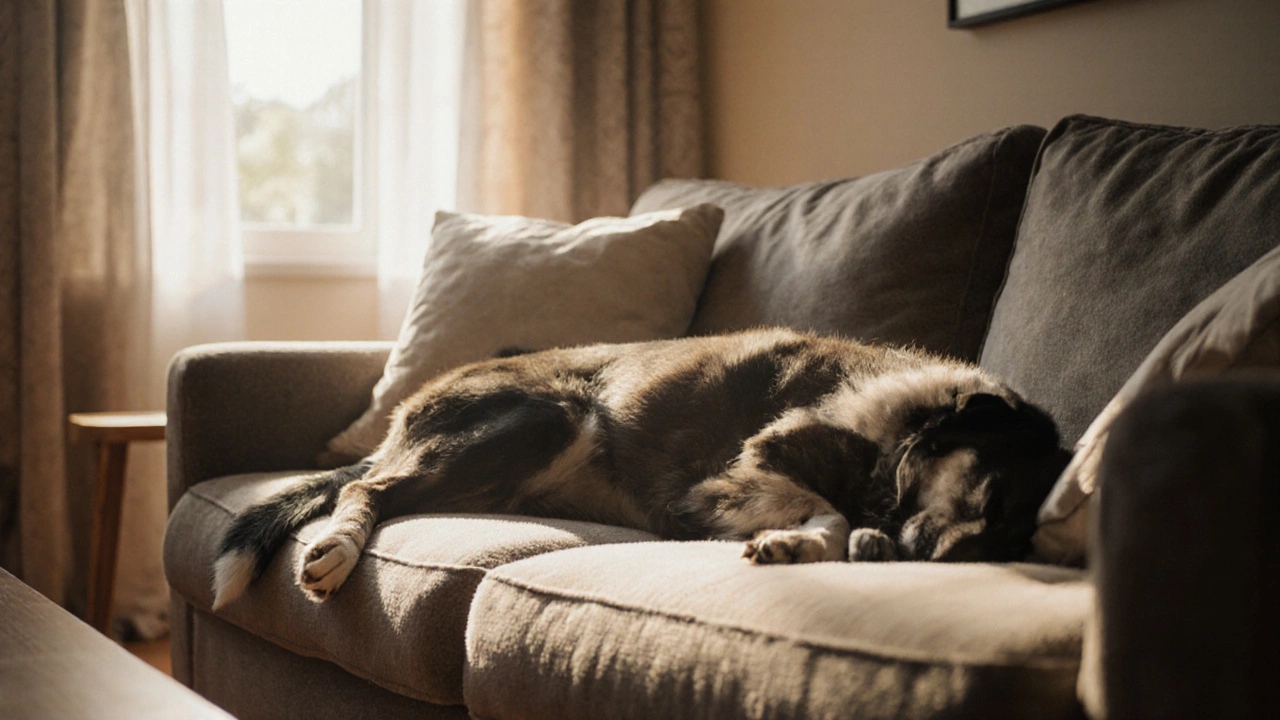Dogs Sleeping: How Rest Impacts Your Canine’s Health, Training, and Care
When we talk about dogs sleeping, the natural rest cycles that keep a dog’s body and mind balanced. Also known as canine napping, it shapes everything from coat condition to learning ability. dog grooming, regular bathing, brushing, and coat care benefits from a well‑rested animal because sleep supports skin regeneration and reduces shedding. Likewise, dog training, the process of teaching commands and behaviors relies on a calm brain; a tired pup can’t focus, so consistent rest improves recall and obedience. Finally, dog nutrition, the diet that fuels growth, energy, and recovery works best when the digestive system isn’t stressed by sleep deprivation. In short, dogs sleeping encompasses health, grooming, training, and nutrition, creating a feedback loop where each area reinforces the other.
Practical Ways to Boost Your Dog’s Sleep Quality
Start with a quiet, dim space that mimics a den – a low‑profile crate or a padded bed away from the kitchen chatter works wonders. Keep the temperature comfortable; most dogs thrive around 68‑72°F, and a cool breeze can prevent overheating on hot nights. A consistent bedtime routine – a short walk, a gentle brush, then a calm verbal cue – signals the brain that rest is coming, making the dog grooming session a pre‑sleep wind‑down rather than a stress trigger. Provide a chew‑safe toy or a blanket that smells like you; familiar scents calm the nervous system, helping the dog transition from active play to deep sleep. Remember, the same routine that prepares a pup for a training lesson also sets the stage for a restorative night, linking the benefits of dog training with better sleep. Food timing matters, too: feed the main meal at least two hours before bedtime so digestion isn’t racing while the dog should be winding down, ensuring nutrition supports recovery without keeping the gut active. When you travel, choose a carrier that lets the dog lie flat and keep a familiar blanket inside – this mimics the home sleeping spot and reduces anxiety, showing how dog travel planning depends on good sleep habits.
The articles below dive deeper into each of these connections. You’ll find a guide on airline policies that let you bring a rested pup in‑cabin, a salary overview for professional groomers who know how sleep affects coat health, and a step‑by‑step diet plan that pairs nutrient‑rich meals with optimal rest periods. There are also tips on interrupting unwanted puppy behaviours, explanations of why a fresh scent follows a grooming session, and advice on using training collars responsibly – all tied back to how a good night’s sleep can boost outcomes. Scroll down to discover actionable advice, expert insights, and real‑world examples that show why paying attention to your dog’s rest is the cornerstone of every successful pet‑care routine.
- Morgan Ainsworth
- 0 Comments
Do Dogs Like Being Stroked While Asleep? Insights on Canine Sleep Comfort
Learn when and how to gently stroke a sleeping dog, read their sleep cues, and choose the right dog bed for a calm, comfortable rest.
View More
